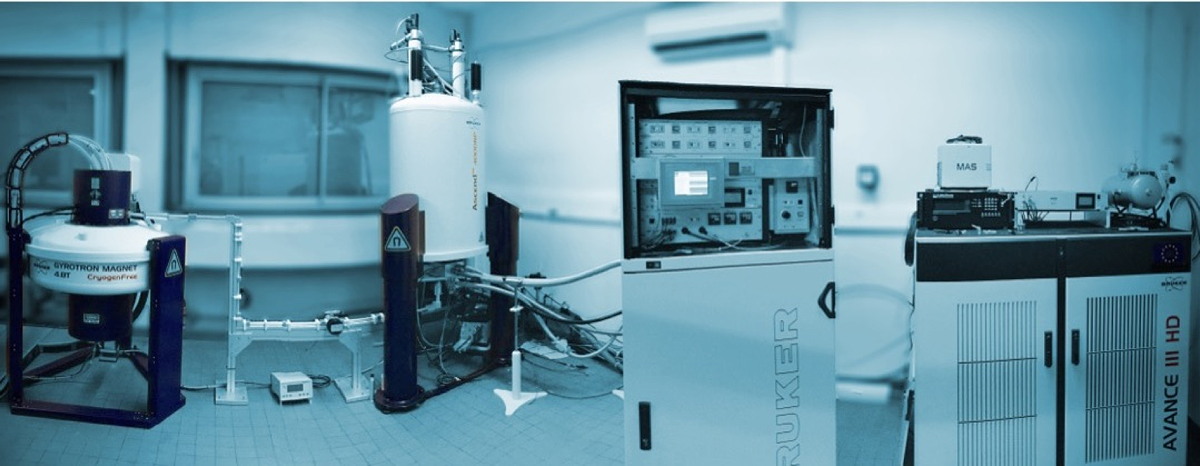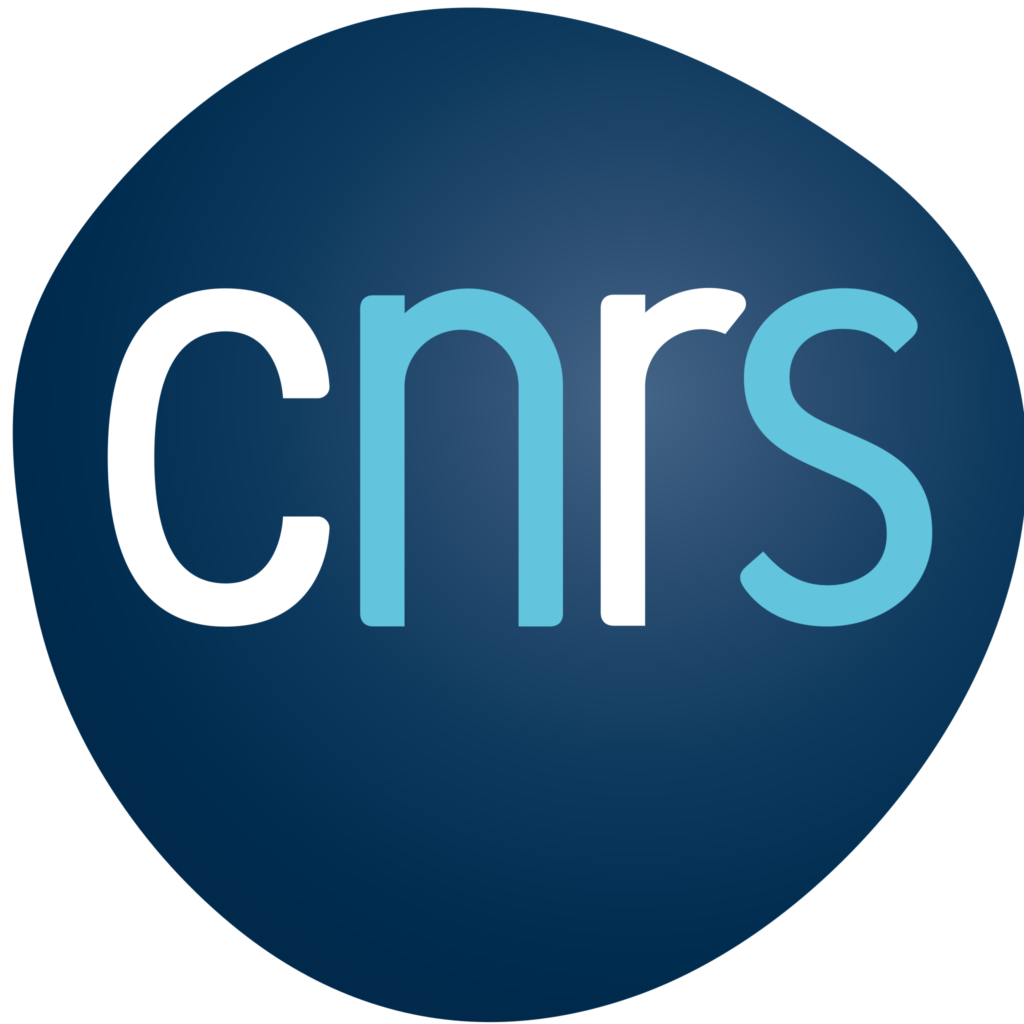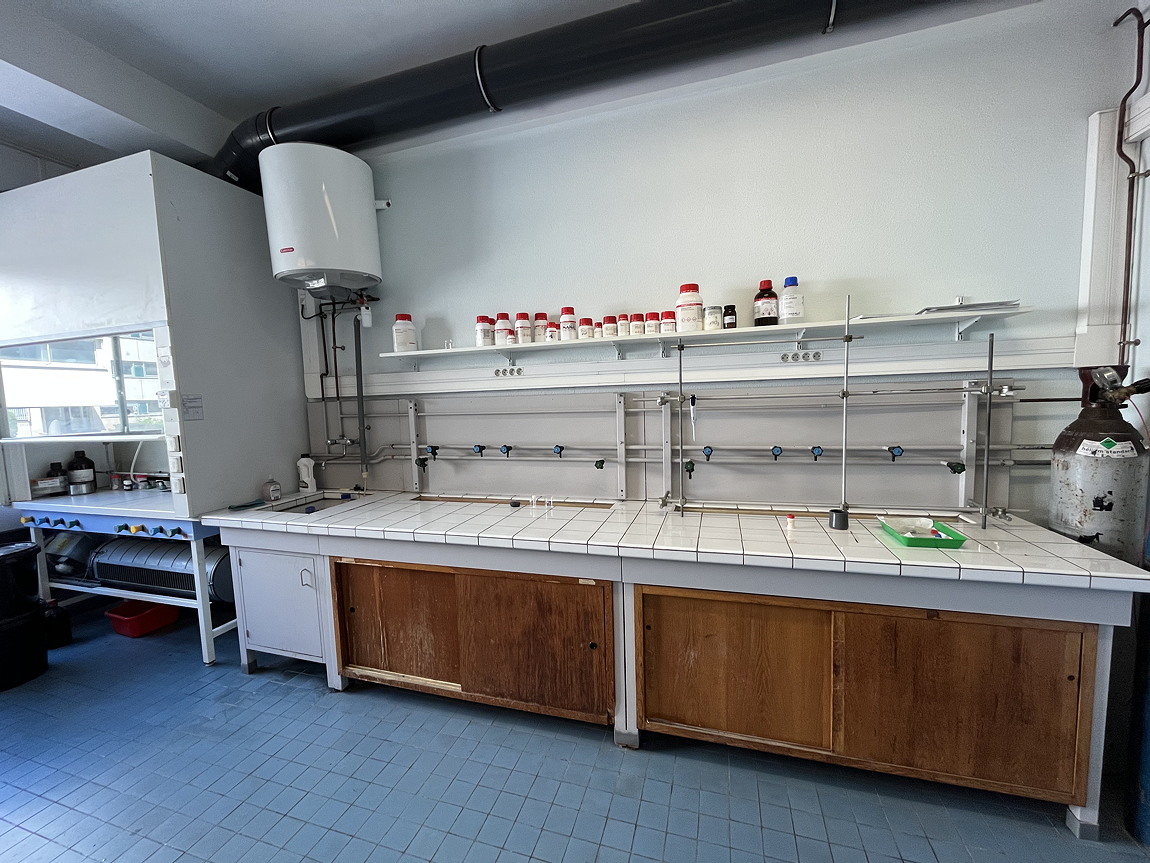NMR instrumentation
Our instrumentation is managed by Spectropole, analytical facility of Aix-Marseille Université located on the Campus St. Jérome in Marseille.
The group has privileged access to the NMR instrumentation, including two 400 MHz spectrometers adapted to the study of solid materials, described below.
Solid-state Dynamic Nuclear Polarization

Solid-state dynamic nuclear polarization, typically referred to as MAS DNP, is a hyperpolarization technique used to increase the sensitivity of solid-state NMR. The NMR signal intensity is increased by transferring the electron spin polarization to the coupled nuclear spins under microwave irradiation, typically at cryogenic temperatures (100 K) in a MAS (magic-angle spinning) probe.
Stable unpaired electrons, called polarizing agents, are added to the sample following different sample preparation procedures. Sample preparations methods such as incipient wetness impregnation, frozen solutions, glass forming, film casting, etc., usually require to first dissolve the polarizing agent into water or an organic solvent. The polarizing agent is commonly constituted by a biradical derived from a nitroxide. Very popular examples of polarizing agents soluble into water and organic solvents are AMUPol and TEKPol, respectively. Both these radicals were developed at the ICR in the group of O. Ouari.
Currently, the signal enhancement factors vary between x10 and x200 depending on the type of polarizing agent used and, above all, depending on the nature of the sample (low molecular mass organic molecules, polymers, inorganic materials, etc.).
From a technical point of view, DNP NMR requires a classic solid state NMR spectrometer (high power electronic console, superconducting magnet), a low temperature MAS probe (LT-MAS), a control unit for cryogenic temperatures, and a microwave source (gyrotron) which continuously delivers high-power (>10 W) and high-frequency microwave radiation to the sample (e.g.: ~263 GHz for a 9.4 T magnet, i.e. 400 MHz for the Larmor frequency 1H) .
Specifics
- Magnet: Bruker DNP-WB ASCEND 400MHz (9.4 T) with sweep field
- Console: Bruker ADVANCE III-HD
- Transmitters:
- BLAH1000 200-400MHz (1kW)
- BLAX1000 6-243MHz (1kW)
- BLAX500 10-325MHz (500W)
- Control: HP XW4600 Linux Station
- Probe: MAS-DNP WB 3.2mm H/X/Y Low Temperature Probe (max 15 kHz at 100K)
- Low Temperature Unit: LTMAS Cabinet (with Bearing, Drive, VT gases cooled with liquid Nitrogen)
- Liquid nitrogen tank 3000 L
- Bruker Magnet Cryogen-Free (4.8 T) ICC Gyrotron 263 GHz
Solid-state NMR

Specifics
- Magnet: 9.39 T WB, shielded
- Transmitters: BLAH1000 200-400 MHz transmitter with 1 kW amplifier, a BLAX1000 wideband 6-243 MHz transmitter with 1 kW amplifier and a BLAX300 wideband 10-325 MHz transmitter with 300 W amplifier
- HP XW4600 Linux Workstation
- BVT3300 variable temperature unit (-150°C to +250°C)
- Probes
- WB 7mm H/X CPMAS probe (8 kHz MAS)
- WB 4mm H/X CPMAS Probe (18kHz MAS)
- SB probe 4mm H-F/X CPMAS (MAS 18 kHz)
- WB 4mm H/X/Y CPMAS Probe (18kHz MAS)
- WB 3.2mm H/X CPMAS Probe (25kHz MAS)
- SB probe 3.2mm H/X CPMAS (MAS 25 kHz)
- WB 2.5mm H-F/X CPMAS probe (MAS 35kHz)
- SB Probe 1.3mm H/X CPMAS (MAS 65 kHz)
- 5mm H-F/X Static WB Probe
- SB probe 4mm H/13C HRMAS (MAS 14 kHz)
- Probe SB 4mm H/F/X Gradient-MAS (15 kHz)






